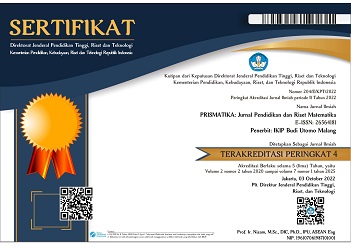Analisis Berpikir Kreatif Siswa dalam Menyelesaikan Soal Pythagoras Melalui Model JUCAMA
Abstract
Creative thinking in classroom learning needs to be optimized so that students have more skills in dealing with and solving problems that arise, especially those related to mathematics. The purpose of this study was to describe the ability of students to think creatively when solving pythagorean theorems in learning with the learning model of Submission and Problem Solving (JUCAMA). This research method is qualitative research. The subjects of this study were 6 eighth grade students of SMP Negeri 2 Laboya Barat, which consisted of 2 students with high mathematics abilities, 2 students with moderate mathematics abilities, and 2 students with low math abilities. Data taken through tests, interviews and documentation. Then the data is analyzed and described. Analysis of creative thinking tests refers to three indicators of creative thinking namely fluency, flexibility, and novelty. The results showed that students who have high math skills can fulfill three indicators of creative thinking based on Siswono theory because they can show fluency, flexibility, and renewal. Students with mathematical abilities are able to fulfill two indicators and cannot fulfill happiness. Meanwhile, students with low mathematical abilities do not fulfill three indicators based on Siswono theory because they are not fluent, not flexible and not renewable in solving the problem.







.png)




